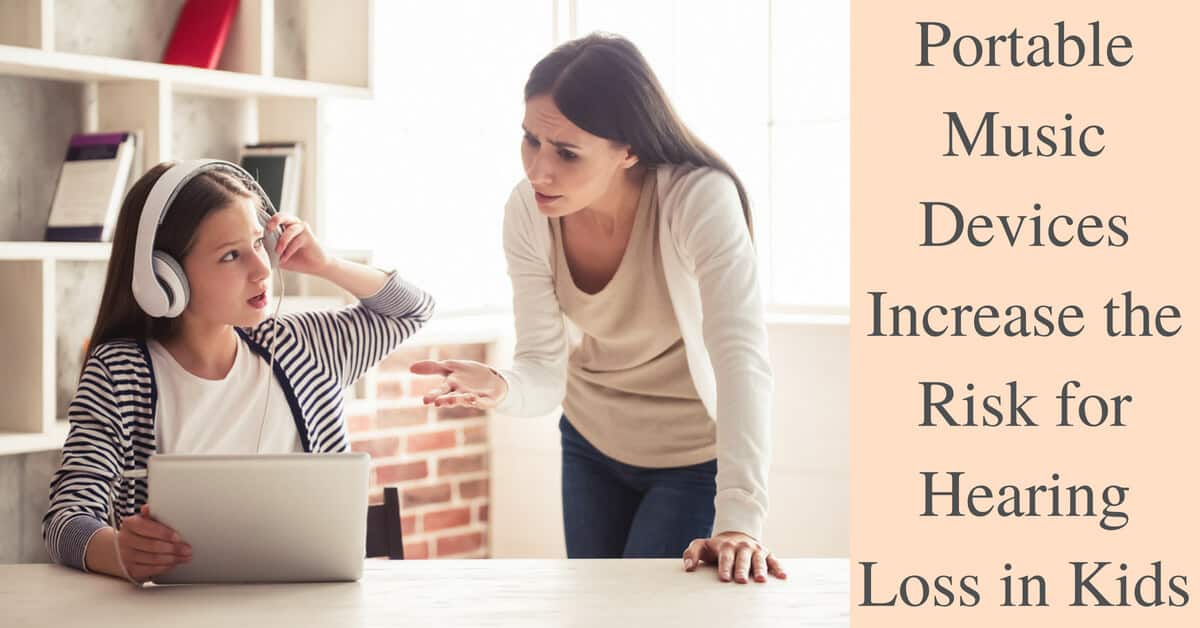Children growing up today have much greater access to technology than previous generations, and while this fact may have made parenting easier, all of this time spent plugged into gadgets is not without its drawbacks. A recent Dutch study has revealed the possibility that children who listen to music through headphones are at a higher risk of noise-related hearing loss.
Researchers looked at hearing test results for 3,316 children from the ages of 9 to 11. Additionally, they interviewed parents about whether their children had any hearing complaints, how often they used their portable music devices, and how high they usually kept the volume.
The results of the study
Of the participants, 14 percent (443 children) showed some trouble hearing at higher frequencies. Especially in children and adolescents, high frequency hearing loss is often associated with damaging noise exposure.
And another surprising result: no matter how long they wore headphones or at what level they set the volume, children who used portable music devices only once or twice a week were more than twice as likely to have hearing loss as kids who never used the devices.
Lead researcher Dr. Carlijn le Clercq of Erasmus University Medical Center in Rotterdam commented on the findings: “Although we cannot conclude from this study that music players caused these hearing losses, it shows that music exposure might influence hearing at a young age. This is important, because hearing loss is irreversible and thus has lifelong consequences,” the researcher said by email.
Over nine in ten older children and teens regularly use a portable music device for education or to relax, researchers note in JAMA Otolaryngology-Head and Neck Surgery.
The symptoms of noise-related hearing loss may differ, but sounds can seem muffled or distant and people may hear ringing in their ears. They may also have trouble deciphering speech. This can often be short-term, such as after a loud concert, but it can become permanent with cumulative exposure to noise.
One limitation of the study is that it wasn’t a strictly controlled experiment designed to prove whether or how portable headphone use might directly cause hearing loss in kids. Some younger children may also suffer from high frequency hearing loss as a result of ear infections, particularly when they happen chronically.
Kevin Franck, director of audiology for Massachusetts Eye and Ear and Harvard Medical School, says the study illustrates the fact that parents should be more aware of how their children use headphones, and how often.
Other ways to protect your children’s hearing:
Along with simply limiting your children’s use of personal music players, there are other ways to keep their hearing safe and prevent long-term problems. Here are a few.
- Try out your kid’s headphones. Many headphones for children claim to restrict the volume to safe levels, but in a recent study by Wirecutter, 30 sets of headphones allowed the volume to rise above the advertised limit. So even if your child’s headphones are “volume-limiting”, take a moment to test their maximum volume and make sure they can’t reach a damaging level. If someone else in the room can hear the music while you’re wearing the headphones, they’re too loud.
- Insist they take listening breaks. Just as it is helpful to rest your eyes after looking at a screen for an extended period of time, it is beneficial to give the ears a chance to rest after long periods of listening. Asking your child or teenager to take a 10-minute listening break every hour will give the hair cells in their inner ears a chance to rest — and this will minimize their chances of long-term hearing damage.
- For young children, avoid earbuds. Earbuds place sounds closer to the eardrum, so noise-cancelling headphones are a much better option for little ones whose ears are more susceptible damage from loud noises. While headphones that cancel noise may be more expensive, they offer the added benefit of reducing environmental sounds that may be damaging.
- Supervision is important. This is particularly the case with young children, who may accidentally turn the volume up too loud. Periodically check the volume level for yourself to make sure it’s still safe.
Visit Us at Desert Valley Audiology
Our team provides comprehensive hearing services for the entire family. To schedule an appointment for a hearing test, contact us at Desert Valley Audiology today.

